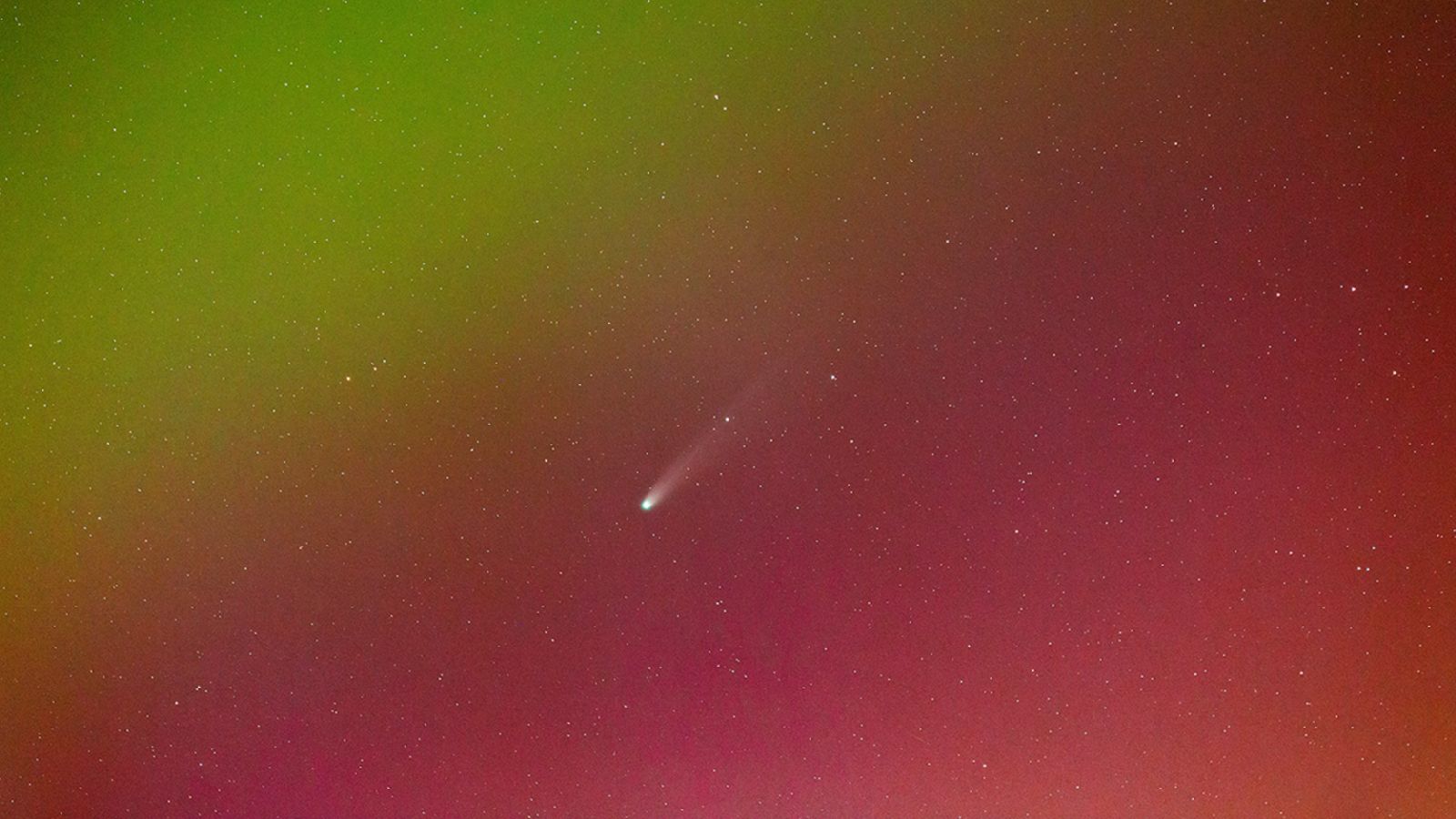Days before making its closest approach to Earth for more than 1,000 years, the superbright comet C/2025 A6 (Lemmon) has been snapped over the Scottish Highlands, appearing to fly through a technicolor swirl of auroras that suddenly exploded into the night sky.
Photographer Alan Tough took the spectacular shot in the early hours of Saturday (Oct. 18) from his backyard near the town of Elgin in northeast Scotland. He was originally planning to photograph the comet on its own when the auroras suddenly erupted, according to Spaceweather.com, which first shared the photos.
A wide range of aurora colors were visible within the auroral arc, including more typical colors, such as greens and reds, as well as rarer hues, like oranges and pinks, which only appear under specific conditions.
The bright comet was more than 230 times farther away from Earth than the moon when the image was taken.
Comet Lemmon was discovered on Jan. 3, by researchers at the Mt. Lemmon SkyCenter observatory in Arizona’s Santa Catalina Mountains. It is a nonperiodic comet that likely orbits the sun every 1,350 years.
Comet Lemmon will make its closest approach to Earth today (Oct. 21), when it will come within 56 million miles (90 million kilometers) of our planet, before reaching its closest point to the sun, or perihelion, on Nov. 8.
Lemmon has become much brighter in recent weeks as its increased proximity to the sun has caused the cloud of gas, ice and dust surrounding it — known as its coma — to expand. It currently has an apparent magnitude of 4, meaning it is clearly visible to the naked eye.
The comet has also grown a sizable tail, which has been frequently battered by solar wind as Lemmon swerves through the inner solar system.
People in the Northern Hemisphere can see the comet in the northwestern sky, located just below the Big Dipper, shortly after sunset. While visible to the naked eye, the best views will be achieved with a decent backyard telescope or a pair of stargazing binoculars. To capture the best possible photos of Lemmon, you can check out our comet photography guide.
Another bright comet, named SWAN, also reached its closest point to Earth on Monday (Oct. 20) and is currently observable in the night sky not far from Lemmon. However, SWAN is not visible to the naked eye and can only be seen using stargazing equipment.
First Appeared on
Source link













